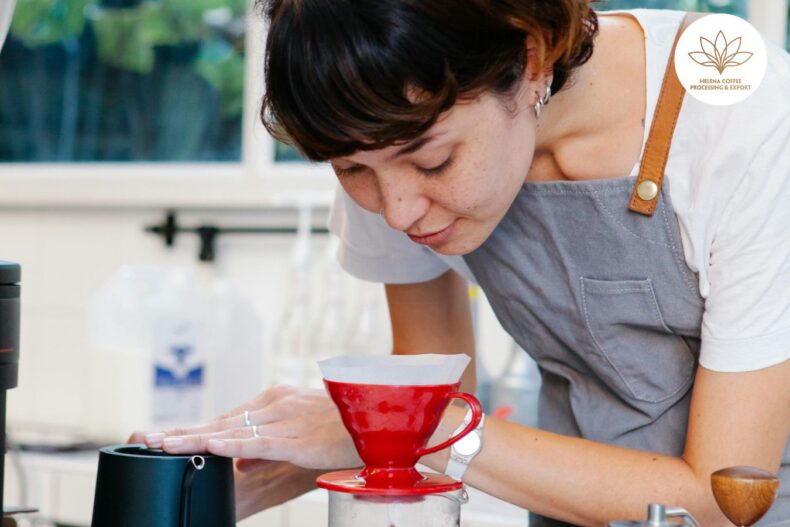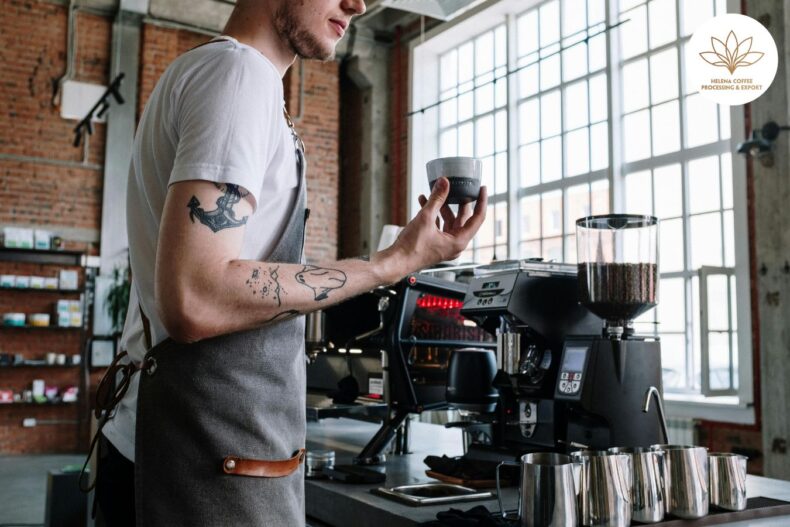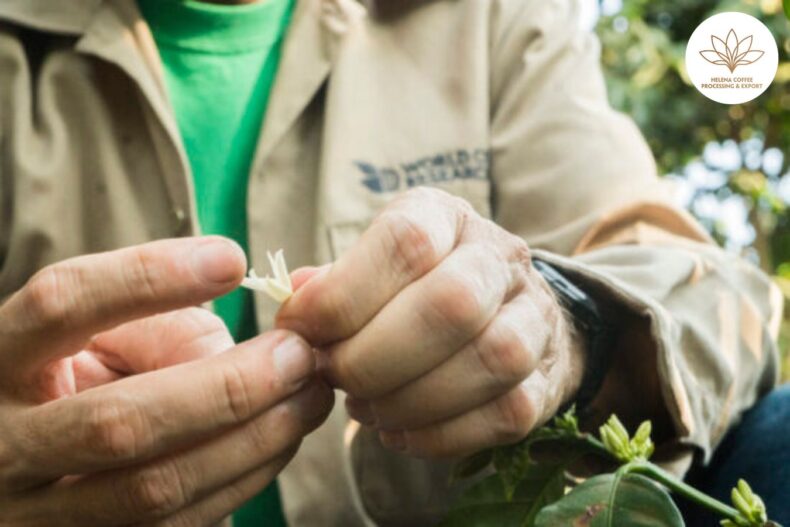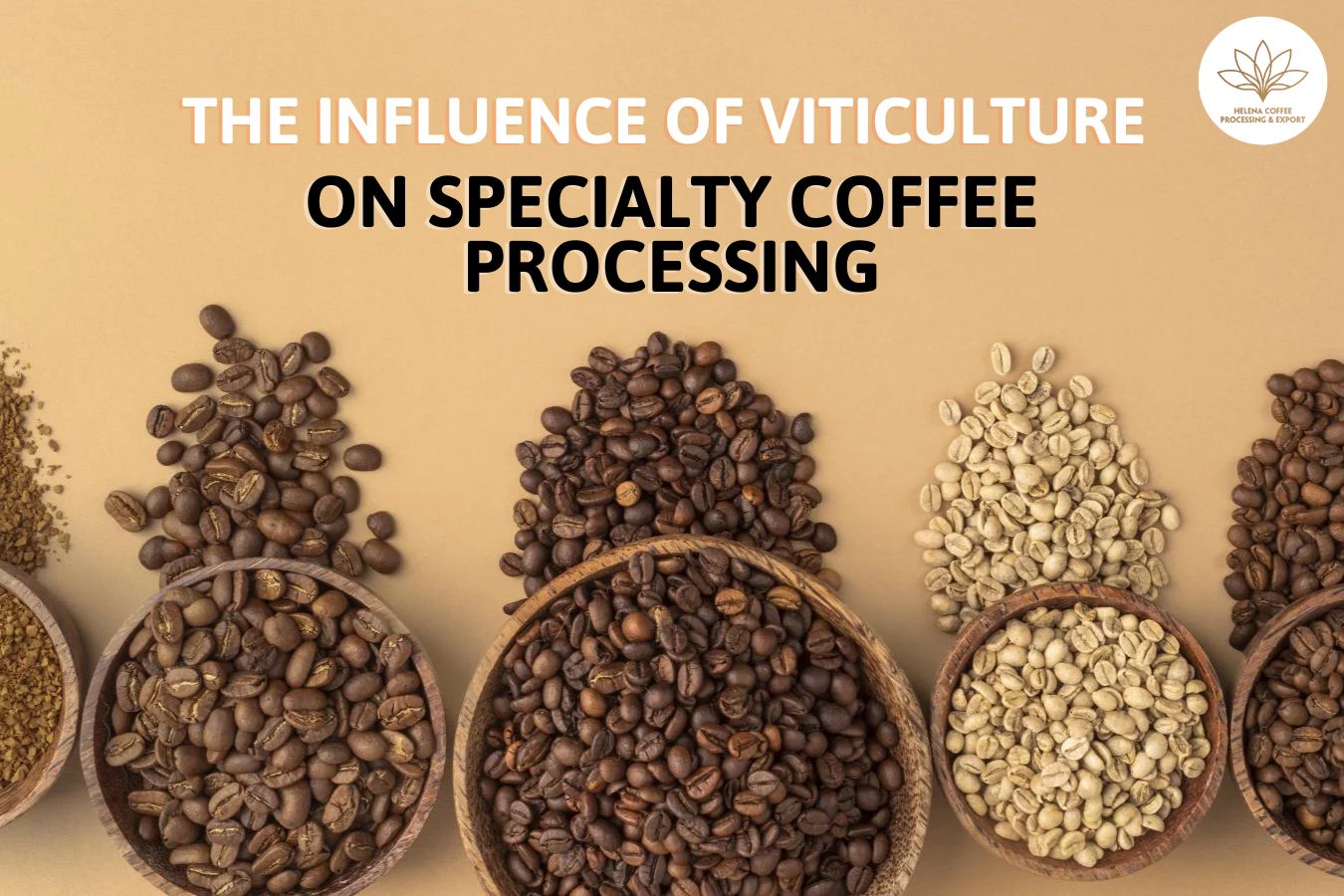
The Influence of Viticulture on Specialty Coffee Processing At first glance, the coffee and wine industries might appear worlds apart. Yet, a closer examination reveals a rich tapestry of shared language and agricultural practices that bind them.
Particularly in the realm of processing, the influence of viticulture on specialty coffee has become increasingly evident. Specialty coffee producers have been adopting and adapting techniques from winemaking, leading to an exciting evolution of flavor profiles within the coffee industry.
These advanced processing methods, inspired by the traditions of winemaking, are not only becoming more prevalent but are also broadening the spectrum of tastes available to coffee enthusiasts.
For a more insightful perspective, I engaged with Camilo Merizalde, the visionary behind the Santuario Project, and Carlos Pola, the proprietor of renowned Salvadorian estates, including San Antonio, Las Brisas, and San Roque. Their insights offer a window into the transformative influence that the wine industry has had on coffee processing. Continue reading to explore their expert contributions.
The Evolution of Coffee Processing: A Nod to Winemaking Techniques
In the realm of specialty coffee, the wave of experimental processing has become a focal point of fascination for professionals and aficionados alike. While the coffee world has traditionally revolved around the big three processing methods—natural, washed, and honey—recent years have witnessed a surge in innovative and complex techniques.
It’s widely acknowledged that coffee processing has undergone a significant transformation. However, what might not be as commonly recognized is the pivotal role of winemaking in driving this wave of ingenuity.
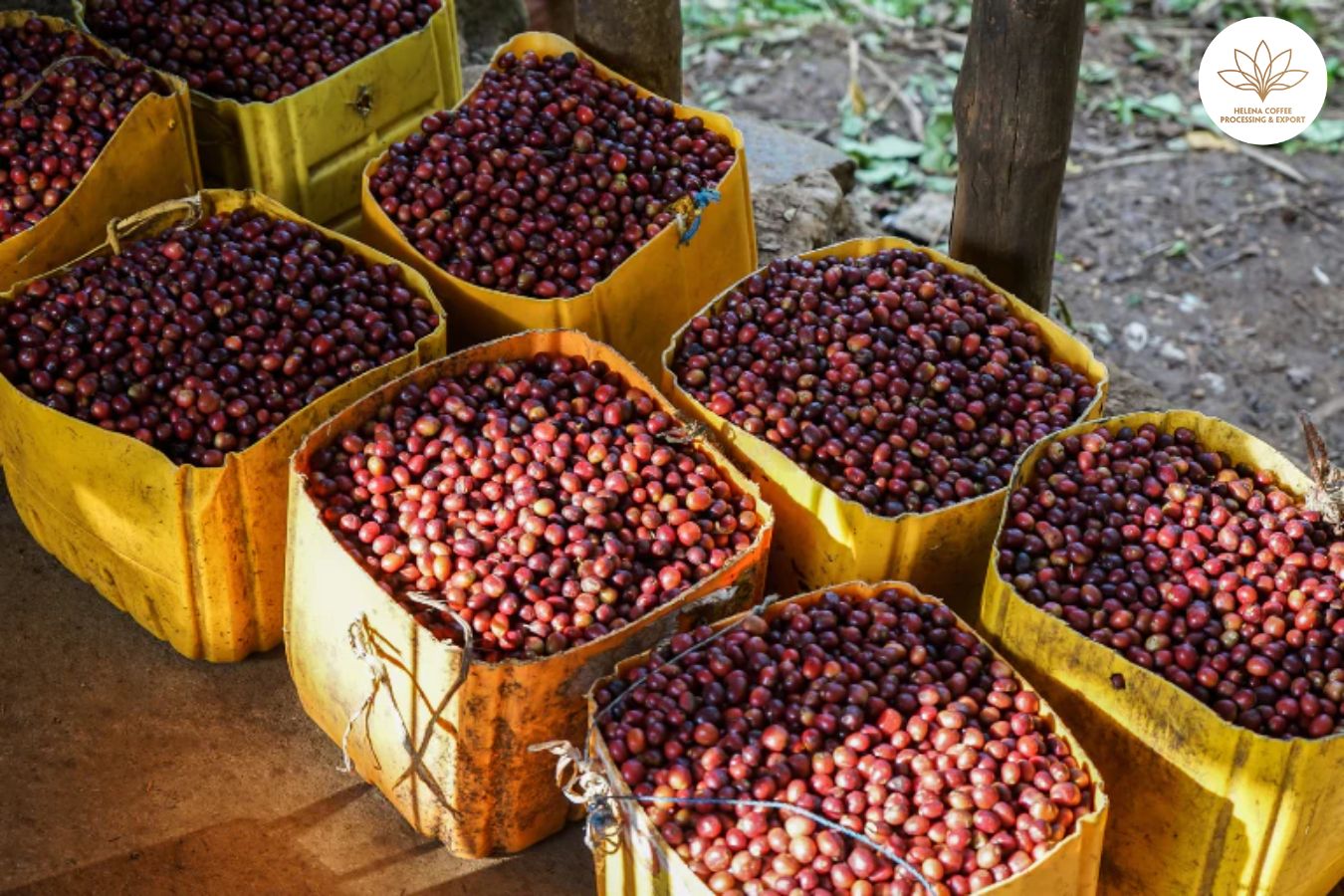
Take, for instance, the groundbreaking moment when Saša Šestić, the 2015 World Barista Champion, introduced the world to carbonic maceration with the Sudan Rume variety. This process captivated the coffee community with its pronounced fruity notes and enhanced sweetness.
Saša’s triumph at the WBC catapulted carbonic maceration into the limelight, sparking a surge of interest in experimental coffee processing. But his efforts didn’t occur in isolation.
Behind the scenes, Camilo Merizalde, the founder and director of the Santuario Project, was instrumental in refining the carbonic maceration technique alongside Saša. Merizalde’s organization, which operates farms and wet mills across Colombia, Costa Rica, Brazil, and Mexico, has been at the forefront of coffee processing innovation.
Similarly, Dan Fellows crowned the 2019 World Coffee in Good Spirits Champion, achieved distinction with a uniquely processed frozen fermented Pacamara coffee. In parallel to Saša’s collaboration, Dan worked closely with coffee processing connoisseur Carlos Pola, demonstrating yet again the collaborative spirit driving the industry’s creative processing frontier.
Delving into Winemaking’s Impact on Coffee Excellence
The art of winemaking and coffee crafting are intertwined, sharing a multitude of foundational aspects that shape their distinctive sensory experiences. Both industries are profoundly influenced by:
- Terroir
- Fermentation
- Processing Techniques
The concept of terroir encompasses a unique set of environmental factors, such as climate, landscape, soil, and local agricultural practices, intertwined with cultural heritage. Originally a term deeply rooted in the wine lexicon, terroir has seamlessly woven itself into the specialty coffee narrative.
Yet, it’s in the realm of processing techniques that the parallels between winemaking and coffee production become most pronounced.
“The myriad of processing techniques we’ve adopted in the coffee world can be traced back to winemaking trends and the in-depth study of the coffee cherry’s anatomy, aiming to enhance and refine flavor and quality,” Camilo remarks.
Since 2018, Carlos has been pioneering with carbonic maceration and cold fermentation. He regards winemaking as a wellspring of wisdom for the burgeoning specialty coffee industry due to its storied past.
“The fruit characteristics bear resemblance, and more crucially, winemaking has a rich history that spans across centuries,” he elaborates. “The meticulous practices and established protocols from the ancient craft of winemaking can be adeptly translated to the relatively young specialty coffee industry.”
He points out that methodologies inspired by winemaking, such as carbonic maceration and cryo-maceration, have been instrumental in distinguishing his coffee in a fiercely competitive arena.
“These avant-garde techniques have been transformative, not just in creating exceptional sensory qualities and achieving higher evaluation scores, but also in amplifying the flavor profiles and extending the coffee’s freshness,” he shares.
The Crucial Role of Fermentation in Coffee Craftsmanship
Fermentation, a biochemical marvel, employs enzymes to simplify complex substances. In the context of anaerobic fermentation, this process unfolds in an oxygen-deprived setting, facilitated by the interaction of yeast or bacteria with sugar and heat.
In the creation of alcoholic beverages, yeasts that produce enzymes convert sugars into ethanol and a medley of other compounds, crafting the unique flavors and aromas that differentiate various spirits and wines.
While fermentation is a stage in all coffee processing methods, its impact on the sensory characteristics of coffee can vary. Some producers leverage fermentation primarily to separate the coffee seed from its pulp and mucilage, as seen in washed processing. Others strategically harness fermentation to fine-tune the coffee’s taste profile and texture. When meticulously managed, fermentation can unlock a vast spectrum of flavors in coffee.
Anaerobic Fermentation
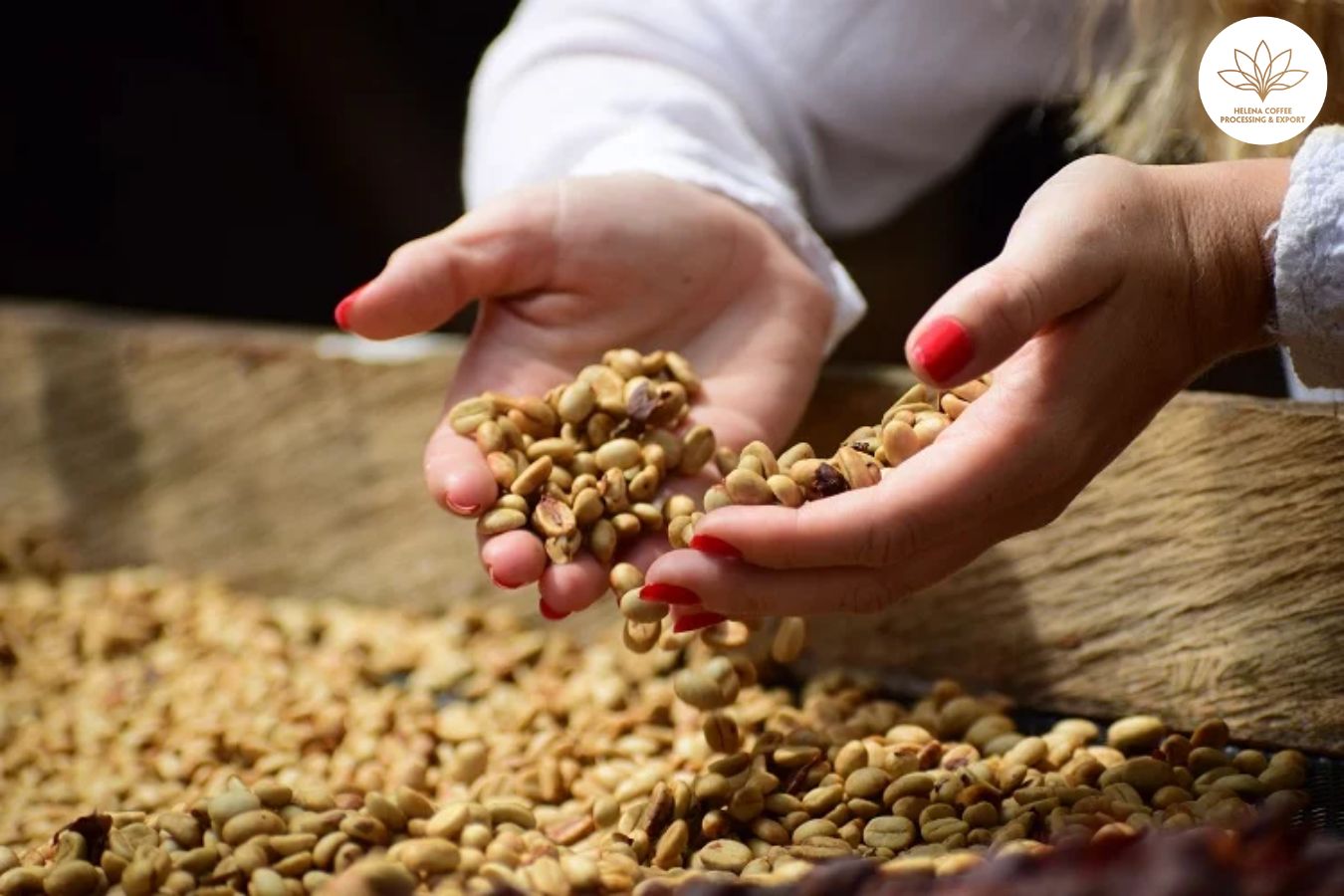
Anaerobic fermentation takes place in environments with minimal oxygen. Producers typically de-pulp coffee and then enclose it in sealed containers, employing valves to release the gases generated during fermentation. This technique profoundly transforms the coffee’s sensory profile, often yielding more pronounced, intricate, and unconventional flavors compared to those found in washed coffees. Despite its burgeoning popularity, some caution that anaerobic fermentation can result in inconsistency without strict control over the variables.
Lactic Fermentation
The farm La Palma y El Tucan in Cundinamarca, Colombia, is renowned for pioneering lactic fermentation, a subset of anaerobic fermentation. In this process, sealed tanks create an anaerobic space where lactobacillus bacteria convert sugars into lactic acid, similar to the method used in dairy production. Producers can initiate the process by adding a starter culture. To ensure success and mitigate risks, some producers might incorporate a saline solution during processing to manage the fermentation’s pace and intensity. Done correctly, lactic fermentation yields a distinctly sweet coffee with a full body, featuring fruity and yogurt-like flavors and textures.
Yeast-Assisted Fermentation
Drawing the most direct inspiration from winemaking, yeast-assisted fermentation is an age-old practice. Coffee cherries can host the growth of yeasts naturally on their skin, but producers can also introduce commercial yeasts to the cherries intentionally. Each approach has its merits, and the choice often hinges on accessibility, sustainability, or the desired sensory outcome.
Commercial inoculation begins with a starter culture, typically Saccharomyces cerevisiae, a yeast strain particularly suited for coffee processing. Conversely, spontaneous fermentation is slower and less predictable, necessitating stringent quality control to ensure favorable results. Whether through wild or controlled fermentation, these methods exhibit a profound influence on winemaking, emphasizing the diverse potential for flavor and quality in coffee production.
Elevating Coffee Through the Art of Carbonic Maceration
Carbonic maceration, a hallmark of innovation in specialty coffee, is a technique adeptly adapted from the world of winemaking. This method gained prominence in the 1930s among vintners in Beaujolais, France, and has been a transformative force in rendering wines from the Gamay grape less bitter and acidic, and more sweet and fruity.
The coffee industry has taken cues from this practice to enhance and diversify flavor profiles. In carbonic maceration, coffee cherries are first de-pulped and then sealed within tanks—either plastic or stainless steel. The tanks are then saturated with carbon dioxide to displace oxygen through a one-way valve. As fermentation progresses, the valve also permits the escape of byproduct gases. Subsequently, the coffee is spread on raised beds for drying, which involves an additional fermentation phase akin to that in natural coffee processes.
“Carbonic maceration is our portal to a world of intricate flavors,” Camilo asserts.
He acknowledges, however, that there are distinctions between its application in coffee and winemaking, notably in the thickness of the mucilage on the cherries and grapes and the differing microbial compositions. Despite these differences, the coffee sector draws much from the more mature wine industry’s techniques.
What sensations can one expect from carbonic macerated coffee? Saša has noted in prior discussions that this method is about fostering specific microbes by manipulating various elements of the fermentation environment such as tank temperature, duration, and microbial esters.
By fine-tuning these parameters, producers can dramatically elevate the coffee’s flavor complexity and cup score, tailoring taste in a deliberate manner.
Certain carbonic maceration styles favor microbes like Bacillus subtilis and Bacillus amyloliquefaciens, which produce acetoin, imparting a creamy, buttery sensation to the coffee. The slower breakdown of sugars in the cherries leads to coffees described as vibrant and reminiscent of wine.
In Panama, a hotbed for high-caliber specialty coffees, innovations in carbonic maceration are gaining momentum. Producers there report that this method yields coffees with a richer tapestry of flavors, heightened acidity, and a broader spectrum of aromas and tastes.
The influence of winemaking on coffee is profound, given humanity’s longstanding affair with wine. As coffee professionals continue to experiment with and refine carbonic maceration, it’s anticipated that the coffee industry will persist in drawing from the rich well of winemaking expertise.
“While our wine experimentation spans millennia, coffee’s exploration of analogous fermentation techniques is relatively nascent, indicating a vast horizon for innovation,” Carlos reflects.
He optimistically concludes, “We’re just scratching the surface of what’s possible, and the potential for crafting extraordinary and diverse coffee profiles is boundless.”
FAQS:
